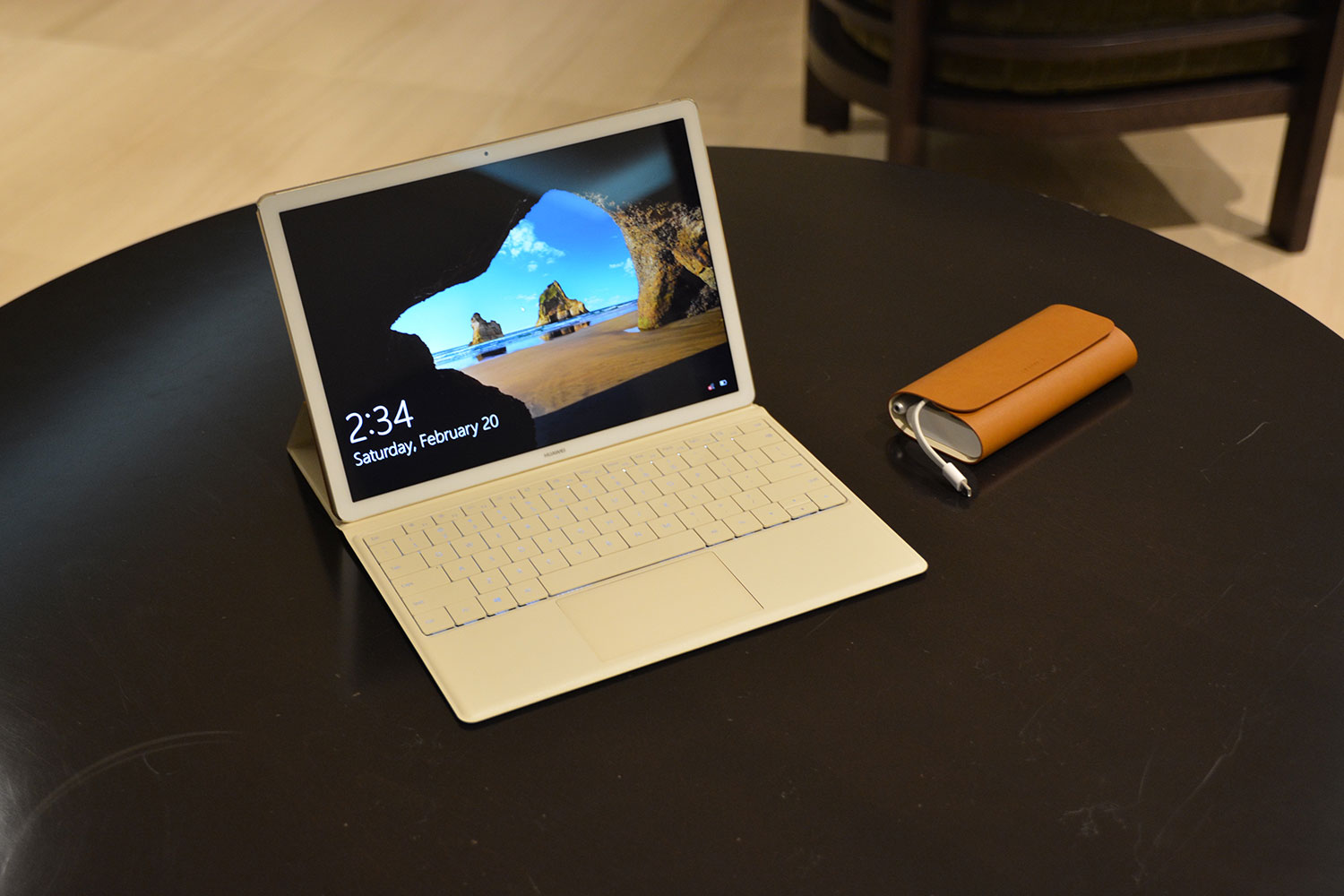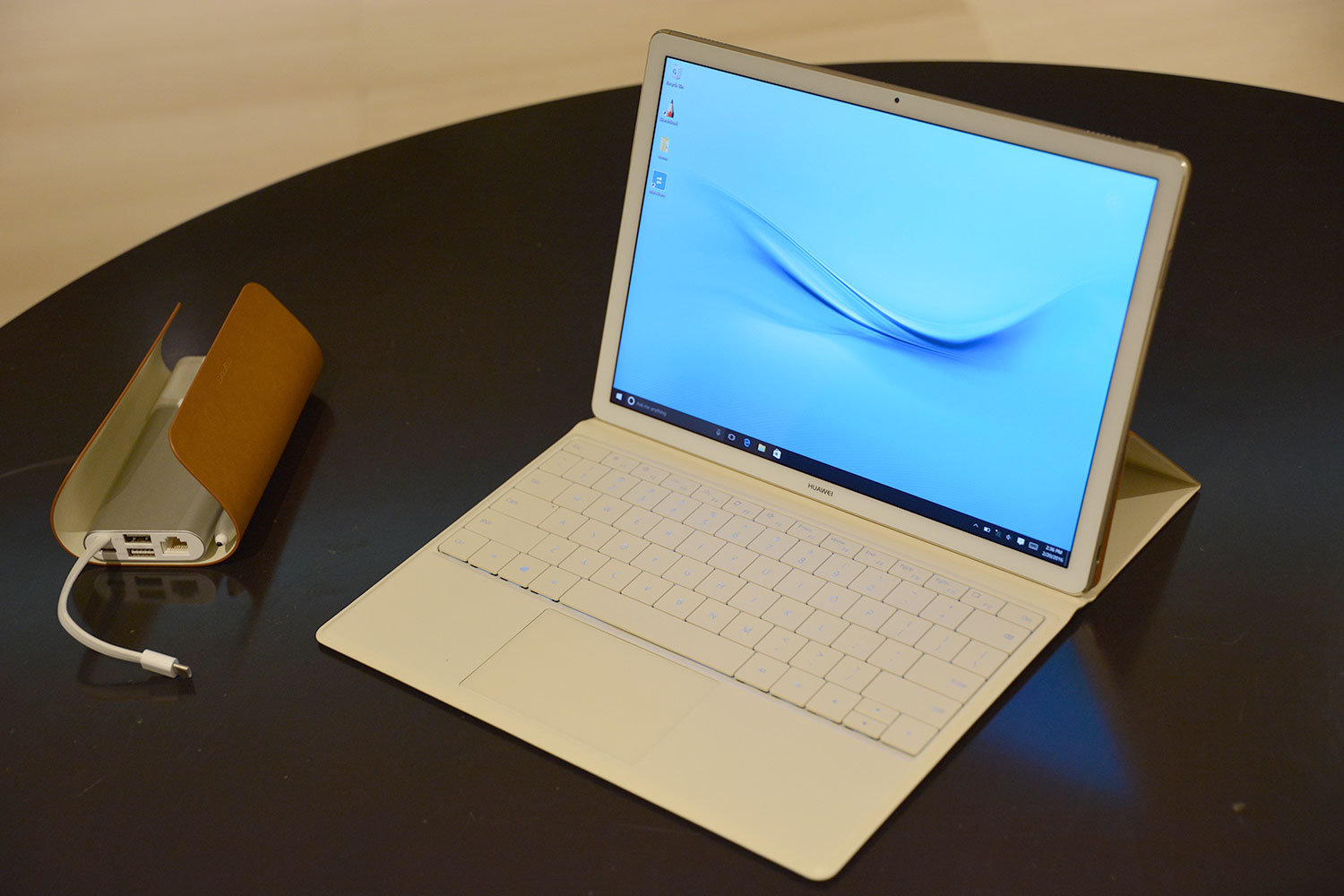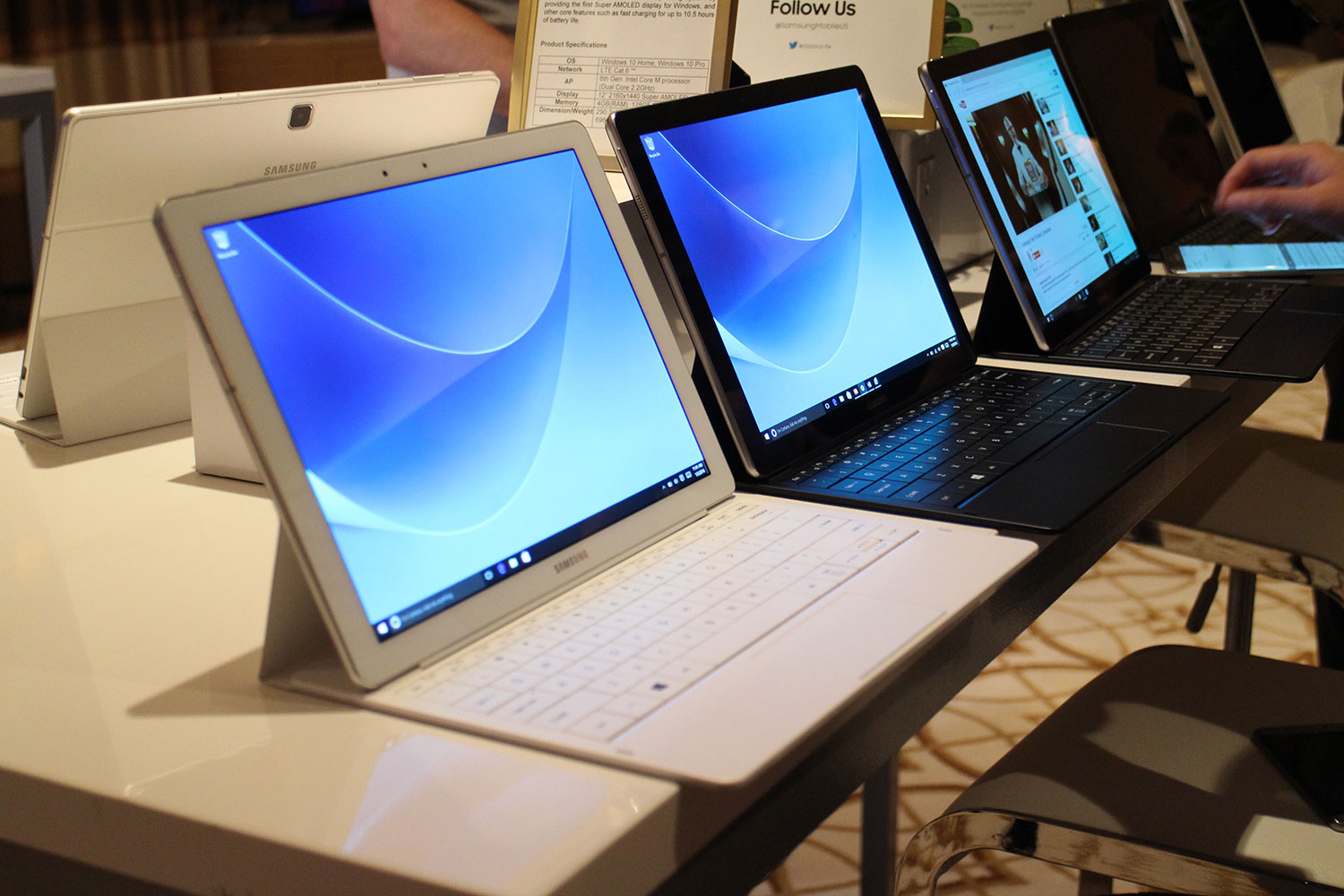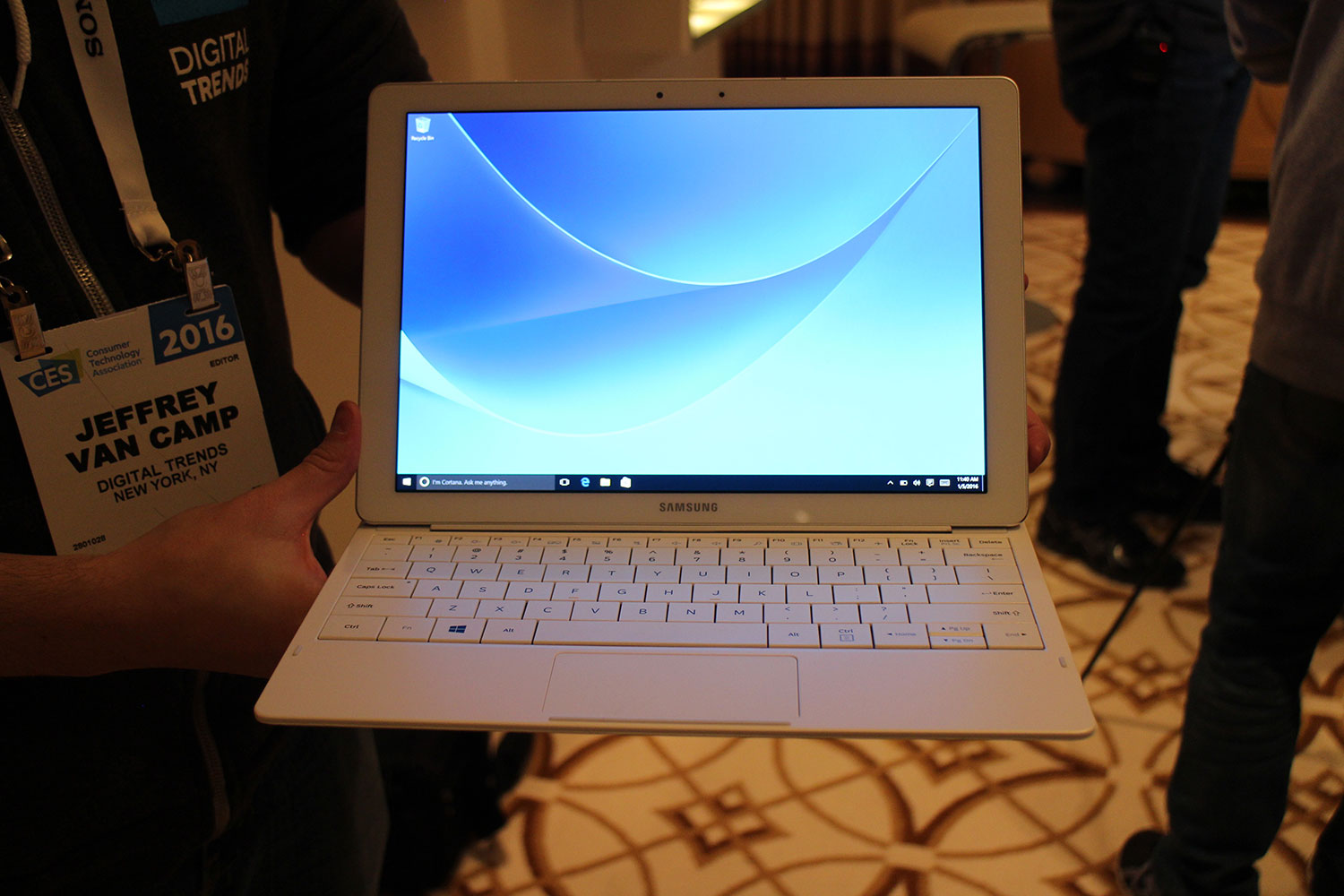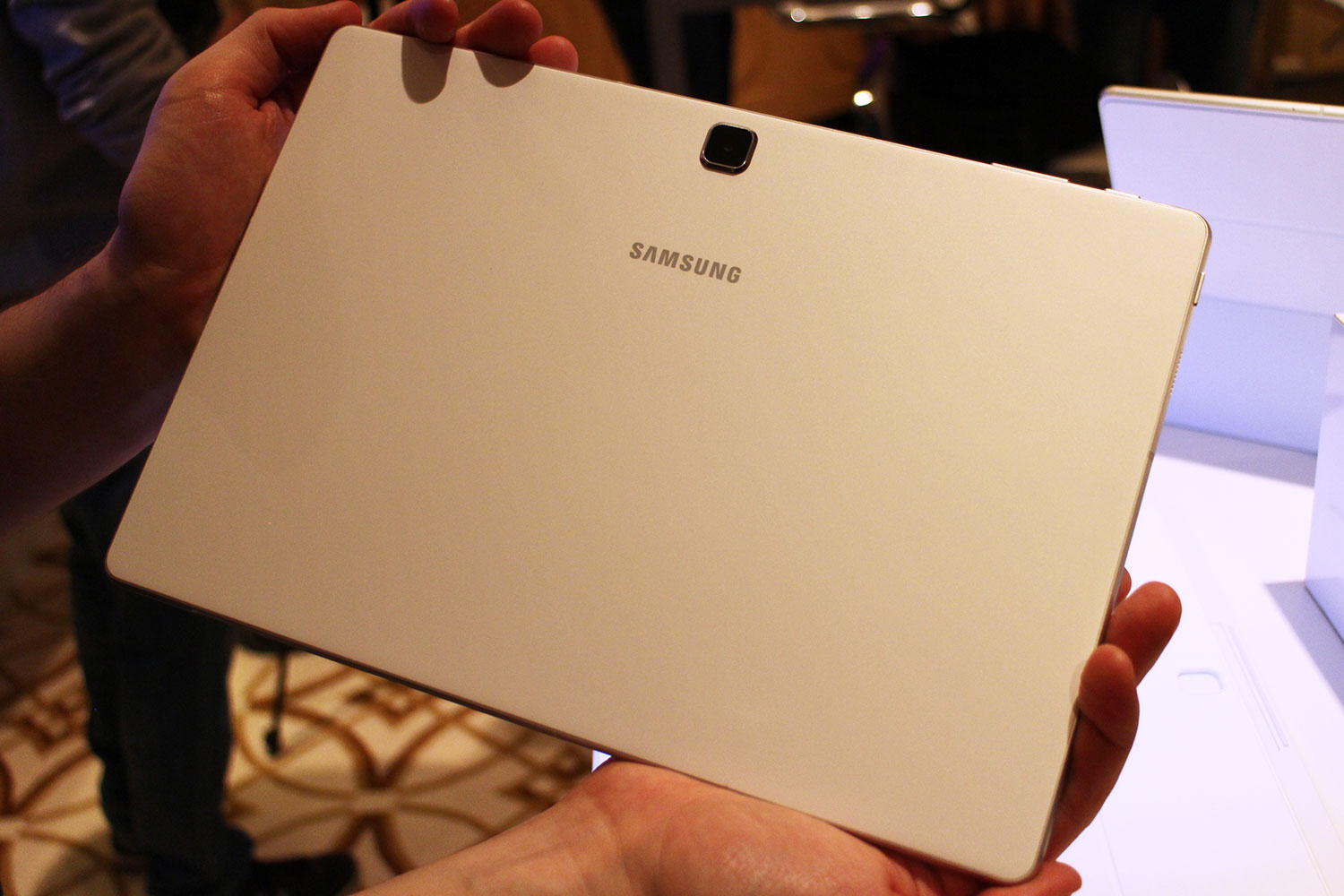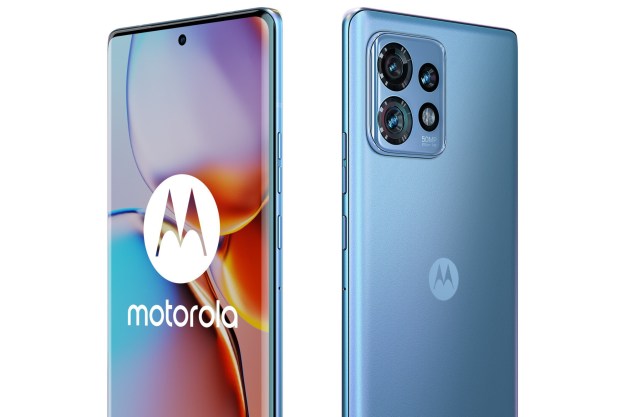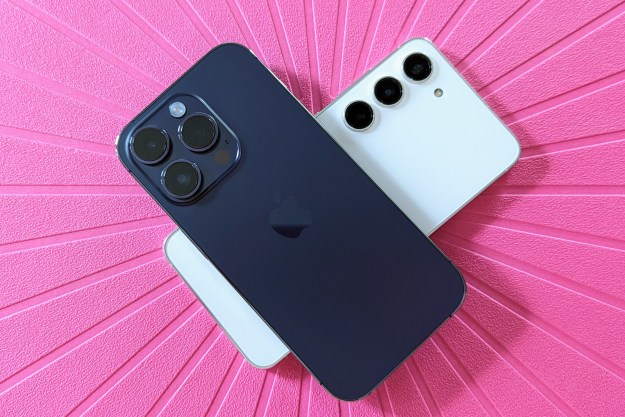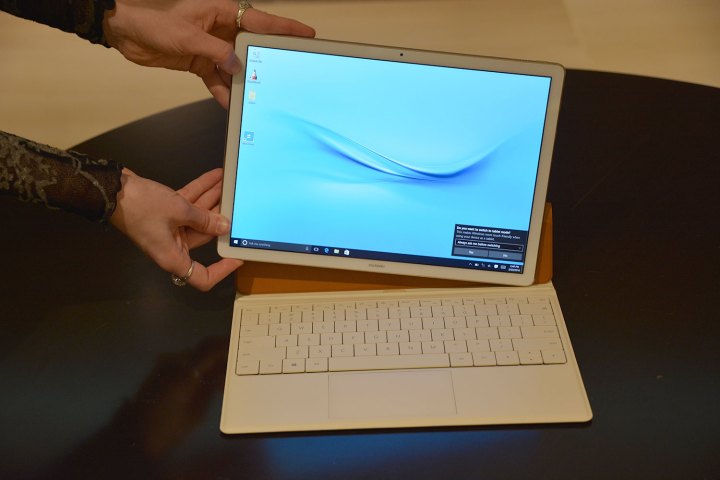
We’re seeing all kinds of 2-in-1 Windows tablets announced, and some of them could well find great success once they’re established in the minds of consumers. Two such devices are the Huawei Matebook and the Samsung Galaxy TabPro S; here’s how the pair of systems fare pitted against one another.
| Huawei MateBook | Galaxy TabPro S | |
| Size | 278.8 × 194.1 × 6.9mm | 290.3 × 198.8 × 6.3mm |
| Weight | 640 grams | 693 grams |
| Display | 12-inch, Quad HD | 12-inch, FHD+ sAMOLED |
| Resolution | 2,160 × 1,440 | 2,160 × 1,440 |
| Operating System | Windows 10 | Windows 10 |
| Storage | 128 – 512 GB SSD | 128 or 256 GB SSD |
| Processor | Intel Core M (Dualcore 3.1 GHz)) | Intel Core M (Dualcore 2.2 GHz) |
| RAM | 4 or 8 GB | 4 GB |
| Camera | Front 5MP | Rear 5MP, Front 5MP |
| Connectivity | USB Type-C | USB Type-C |
| Sensors | Accelerometer, Hall, Light, Fingerprint, Gyroscope | Accelerometer, Hall, Light |
| Battery | 4,430 mAh @ 7.6 V Est. 10 hour battery life Quick Charge |
5,200 mAh @ 7.6V Est. 10.5 hour battery life Quick Charge |
| Charger | USB Type-C | USB Type-C |
| Price | $700 – $1,600 (accessories not included) | TBD |
| Review | Digital Trends Hands-on | Digital Trends Hands-on |
Design
While both the MateBook and the TabPro S are undeniably thin devices, Samsung’s effort has the advantage here — even if it’s only by a hair. It’s 6.3 millimeters thin, against the Matebook’s 6.9 millimeters. However, it should be noted that its other dimensions make it a slightly larger device in terms of overall size.
That being said, both of these tablets are intended to be easily portable, and neither would be a great burden for use on the move.
The MateBook was highly praised for its ‘gorgeous’ physical design when Digital Trends had the opportunity to spend some hands-on time with the tablet at the Mobile World Congress 2016. It’s a sleek piece of kit, to be sure, but its keyboard accessory leaves a little to be desired.
On the other hand, the TabPro S received applaude for its display when Digital Trends had access to that system at the 2016 Consumer Electronics Show. The extra physical size of the tablet seems to be a worthy compromise to make the most of the impressive screen.
However, on the whole the MateBook has a cleaner, cooler aesthetic. It borrows liberally from the Apple school of design, but there’s little harm in aping something that works.
Winner: MateBook
Power and Productivity
In most departments, the MateBook trumps the TabPro S by offering better specifications at a higher cost. Features like 8GB of RAM and a 512GB SSD will hold great appeal for some users, and they’re noticeably absent from the currently announced range of options made available by Samsung.
The standard 4 GB of RAM offered up by both systems might be a touch underpowered for anyone looking to use these hybrid devices as a replacement for their laptop. Huawei is wise to expand the options available to power users.
Once again, the TabPro S has its own salvo to fire back with, in this case a minor improvement in terms of estimated battery life. If we’re comparing the stock versions of each tablet, it’s a victory for Samsung’s 2-in-1. It offers a larger battery which, combined with the less powerful processor, should make for better overall endurance.
Winner: MateBook
Camera
In terms of camera functionality, the TabPro S wipes the floor with the MateBook. Both tablets offer a 5 MP front-facing lens, but Huawei’s device only sports a fixed focus whereas Samsung’s has AutoFocus as a feature as well. On top of that, only the TabPro S is bestowed with a rear-facing camera.
Winner: TabPro S
Display
Both the Huawei Matebook and Samsung Galaxy TabPro S have a 2,160 x 1,440 display resolution. They’re the same size, too, so pixel density is an identical 216 pixels per inch.
The technology powering the pixels differs, however. The Matebook will have an IPS display, while the TabPro S will use Samsung’s AMOLED technology. While we feel the latter is more likely to come out ahead, giving the strength of AMOLED in Samsung smartphones, the specifications alone don’t reveal the victor.
Winner: Tie
Price and Availability
Between optional upgrades to its specs, and the fact that accessories are sold separately, the $700 base price of the MateBook can soon swell significantly. With its keyboard running $130, its stylus $60 and its dock $90, there’s a real investment to be made to see the tablet at its best.
Conversely, the TabPro S includes its keyboard accessory as standard inside the box. Unfortunately, it’s difficult to determine whether or not this is a good deal for the consumer, as Samsung has yet to unveil pricing details. As a result, there’s no way to choose a winner at this time.
Winner: Unknown
Conclusion
On paper, Huawei’s MateBook looks like the clear winner — and an attention-grabbing new device among the increasingly competitive tablet market. Its better hardware as definitely stolen some of Samsung’s thunder. The fact Huawei has announced a price is also significant, since we still don’t know how much the TabPro S will cost.
However, these devices won’t just target that audience, as they’re also neatly positioned to cater to anyone who’s simply looking for a tablet that’s a nose ahead of the crowd. Anyone looking at the baseline systems alone will definitely want to wait until Samsung details its TabPro S pricing before making a decision.
Editors' Recommendations
- 5 phones you should buy instead of the Samsung Galaxy S24 Ultra
- I did a Galaxy S24 Ultra vs. Pixel 8 Pro camera test. It’s not even close
- The Samsung Galaxy S24 Ultra may steal this iPhone 15 camera feature
- The Galaxy Tab S9 Ultra looks like one of 2023’s most exciting tablets
- Samsung Galaxy S23 vs. Galaxy S21 camera test: is it really any better?

